
4 minute read
impr ovem ents
Keep the logo in the top left corner, this is where the consumers attention will be drawn to first (Nielsen, 2008). The logo acts as a landmark for a brand it so placing it here makes it more memorable (Whitenton, 2016).
The navigation bar, store locator, social medias, and customer service options on the left side of screen as viewer attention leans left side, so might increase conversion rate (Nielsen, 2008; Nielsen, 2010).
Advertisement
Pop-up cookie options in the center of screen so user must respond to continue to the website.
F-shaped pattern theory suggests placing email sign up here makes them more likely to sign up (Nielsen, 2008).


Modern day digital technology has increased the consumer demand for customised solutions during shopping experiences, making designable touchpoints more accessible on digital platforms has enabled brands to develop strong relationships with their customer base (Lee et. al 2013; Parise et. al 2016). The brand touchpoint wheel includes the prepurchase experience, purchase experience and post purchase experience which could be logo design, advertising, carrier bag design, app, and website design (Lee et. al 2013). However, it is vital that brands have a clear brand identity as this then allows the touchpoints to be tailored to create a successful and seamless customer experience which could in turn increase brand loyalty (Aaker, 1997; Lee et. al 2013; Tarver, 2022). Looking at Nike, which uses an omnichannel marketing strategy as well as having a clear brand identity of inspiration, empowerment, and innovation, using the brand touchpoint wheel we are able to see how these values are translated to the consumer (Lee et, al 2013; Hashem, 2021). This marketing strategy includes communicating with the consumer directly through the simplistic logo, innovative web design interconnected with its Instagram, empowering ad campaigns and catchy tagline (Hashem, 2021). All these touchpoints mirror Nike’s values showing a seamless brand identity across all platforms and therefore successful visual communication (Aaker, 1997; Oh et. al 2019).
Nike use its sleek logo, incorporated into its ad campaigns, and carrier bags as well as its catchy taglines, innovative web design and futuristic AI ad campaigns to visually mirror its brand values of empowerment, innovation and inspiration establishing a strong brand identity.





The fashion industry today demands more than forecasting and designing, instead it requires ideas to be transformed into innovative photoshoots, pioneering campaigns and digital fashion designs (Armstrong and Armstrong, 2006). Although ways of communicating fashion have adapted, the goal is still the same: to document fashion in a unique way, encourage desirability and sale of designs (Armstrong and Armstrong, 2006). When developing a new collection or campaign, art direction is key as it brings clarity and purpose to a designer’s collection combining art, culture, and emotion to convey a specific message and reaction within consumers (Skov et. al, 2009; Mall, 2010). Artistic direction considers various components such as: colour, typography, the composition, and the concept as they all play a crucial role in narrating the ideas behind the collection (Bradley, 2015). Without art direction campaigns are less impactful as experiences that carry more emotive responses are highly memorable (Mall, 2010; Watanasoponwong, 2021). When campaigns appeal to consumers on a personal level, brands have a better chance engaging their consumers and building emotional relationships which is key to developing brand loyalty (Kim and Sullivan, 2019). To create a successful campaign illustration is key, whether that be in print, digitally, or physically the visuals should clearly translate the concept and the designer (Armstrong and Armstrong, 2006; Hynes, 2023). These components are included in the storyboard below illustrating a ‘new beginnings’ photoshoot.

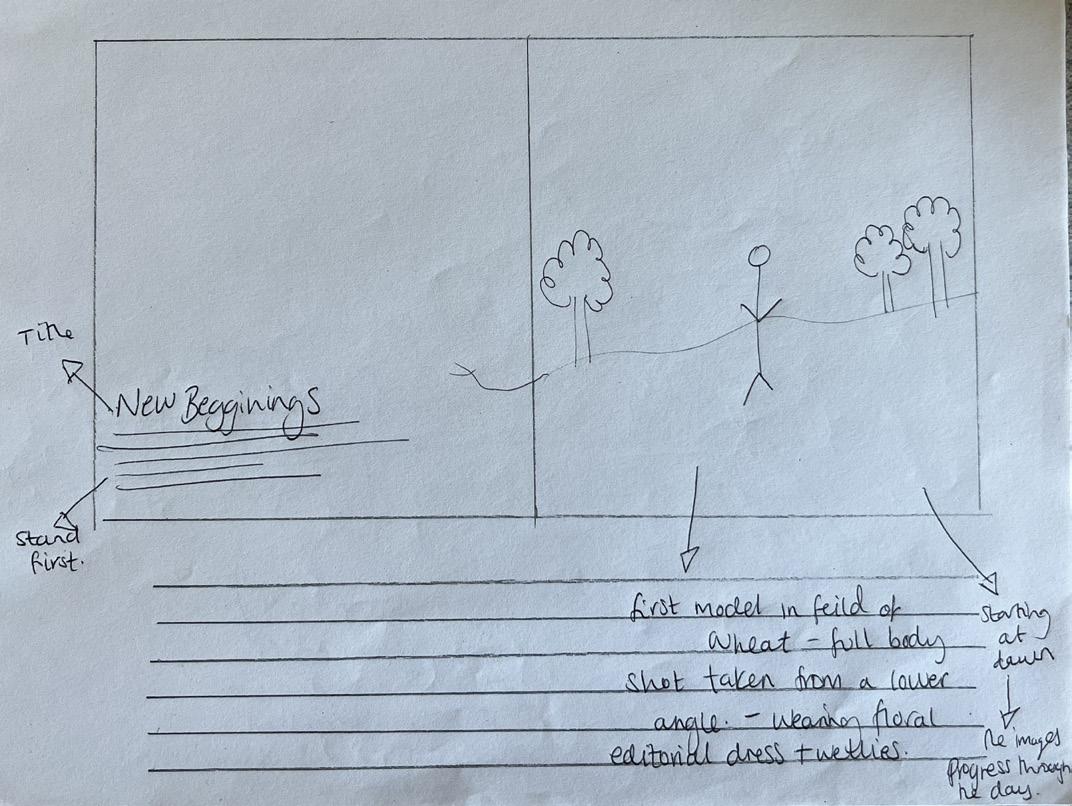
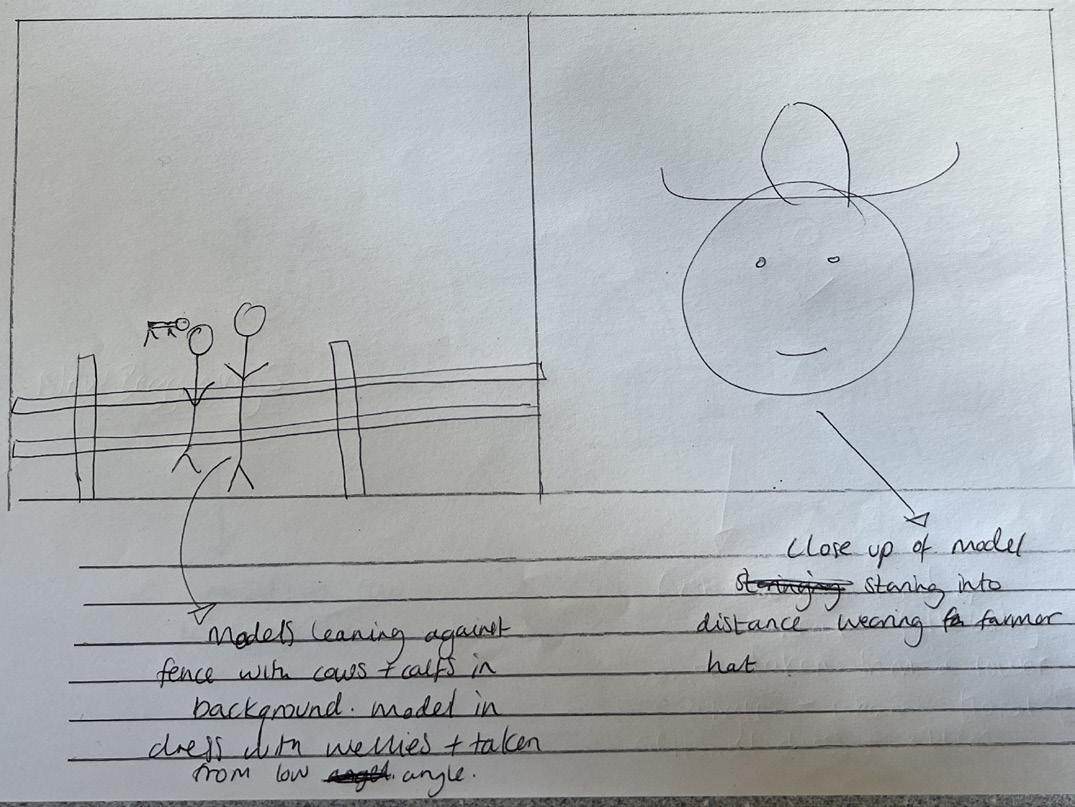
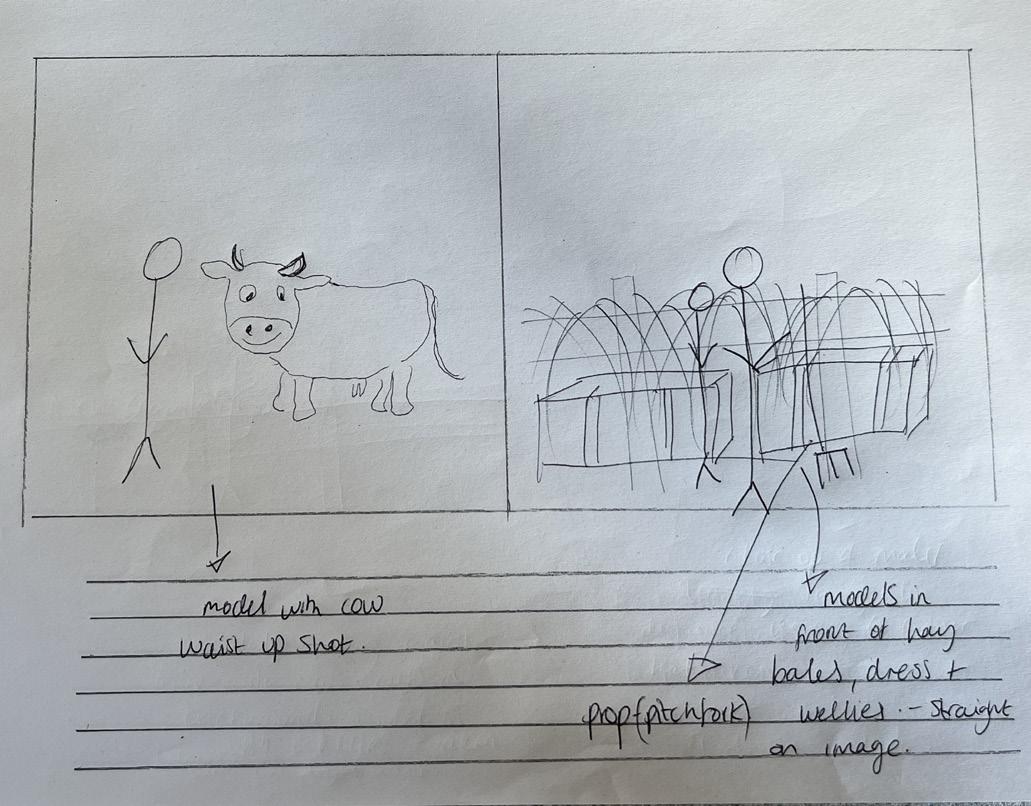

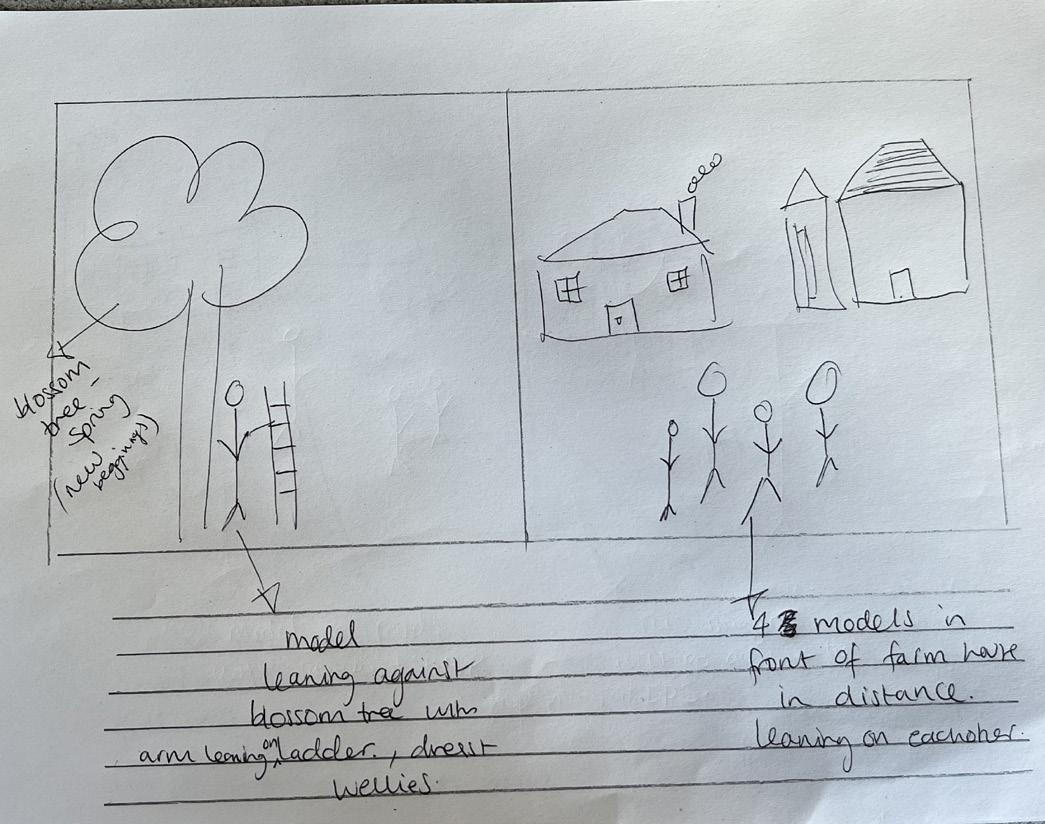



Communicating a concept for a creative brief involves project purpose, objectives, requirements, messaging, demographics, and deadlines (Adobe Communications Team, 2022). Creative briefs are essential when articulating a concept to a client as they clearly outline what the insights as well as what the outcome will look like, so the creative team are on the same page to reduce the risk of expensive mistakes (Duckworth, 1999; Adobe Communications team, 2022). While the delivery of the information in the brief is vital, developing a strong relationship between the business and the creatives is just as essential as it helps to overcome challenges and develop a coherent outcome (Burgoyne, 2013). Burberry’s Spring/Summer 2010 campaign starring Emma Watson aimed to reflect sophistication and an eclectic, cool group of people with varying attitudes towards the Burberry guy and girl (Milligan, 2010). According to Lischer (2022) the colour white can resemble freshness and sophistication therefore as the campaign used a white backdrop it could be considered it does meet the brief. However, casting two white models could be regard as misinterpreting the brief as it doesn’t represent an ‘eclectic’ group of people. Eclectic can also be described as inclusive, but from the casting in this campaign it is clear that inclusivity isn’t considered. From this campaign we can see how valuable clear communication is when briefing a client.

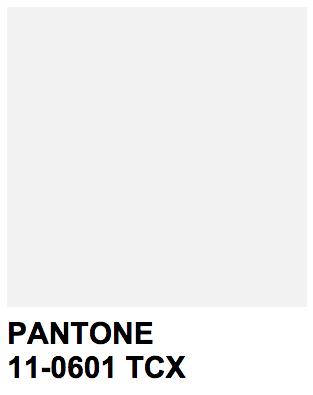
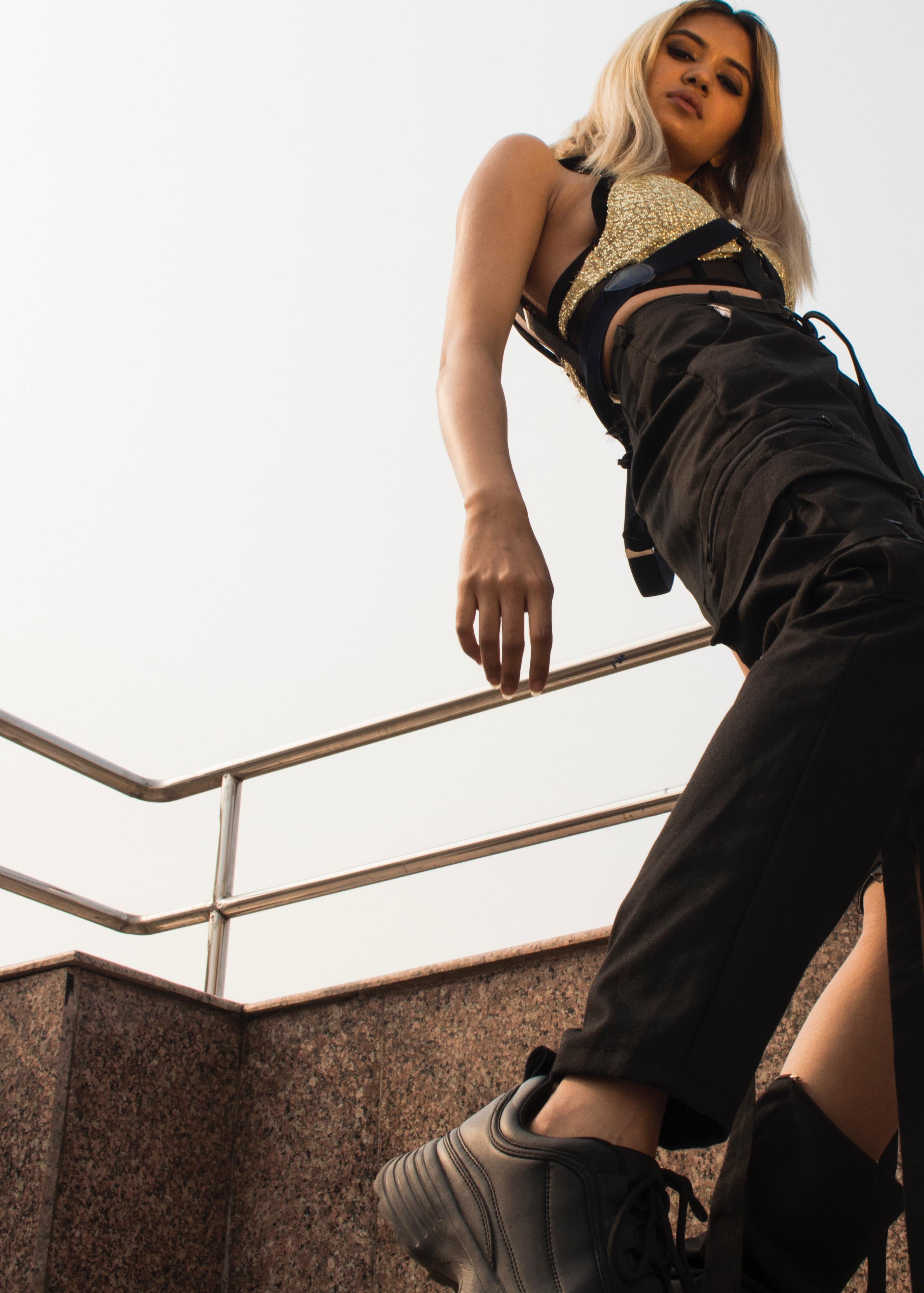

Styling is based on the concept of appearance and aesthetics (Joy et al. 2012). Fashion stylists are creative collaborators that work both in the production and post-production stage of photoshoots manipulating clothing to provide new meanings to images (Pantanella, 2022). They do this by using certain colours, shapes, and fabrics appropriate for the brief (Pantanella, 2022). The way photoshoots, clothes, and products are styled is essential as it provides a glimpse into what lifestyle, aesthetic or service could be obtained after purchase, as well as visually representing a brands personality and ideal customer (Giorgetti, 2021; Pöllänen, Parkko, Kaipainen, 2019). If an unbuttoned white shirt was photographed on a model with glamorous makeup the shirt would give a different impression to that if it were to be photographed with suit trousers and blazer. Styling can be split into different functions, for example personal styling, artistic styling, promotional styling, fashion blogging, and commercial styling, however, all have slightly different purposes (Pöllänen, Parkko, Kaipainen, 2019). Personal styling supports human need, while artistic styling interprets personal thoughts in an imaginative way through creative expression, whereas promotional styling aims to make an impression and influence purchases (Pöllänen, Parkko, Kaipainen, 2019). Even though each function creates a different outcome the elements are the same, to create a story, show wearability, spark inspiration, and act as communication to others (Saba, 2022).



